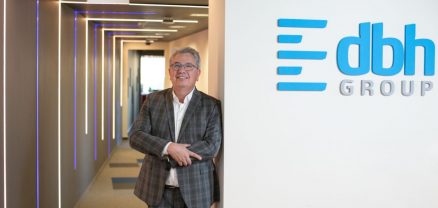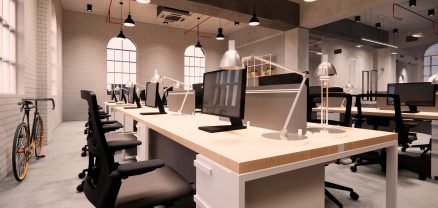Office Amenities That Employees Actually Want in 2025
Employee expectations for office amenities have evolved significantly over the last few years. With hybrid work models and flexible schedules becoming the norm, offices are no longer just places to work – they need to offer spaces where employees feel comfortable, productive, and supported. Employers, HR managers, and workspace providers are now tasked with rethinking office design to attract and retain top talent in 2025.
This blog will explore the most requested office features, health and wellness amenities, and tech-driven solutions redefining the workplace. We’ll also take a look at trends shaping the future of office environments.
Most Requested Office Features
Employees crave offices that balance functionality with comfort. Here are the most in-demand office features for 2025:
Flexible Workspaces
Gone are the days of rigid cubicles and permanent desks. Modern employees expect offices to cater to multiple work styles. Flexible workspaces include:
- Hot-desking options that allow employees to choose where they work.
- Breakout zones for brainstorming or collaborative sessions.
- Private pods for focused tasks or calls.
A study by CBRE found that 52% of employees prefer functional spaces that enable choice and flexibility in how they work. Offering a variety of spaces encourages creativity and productivity.
Natural Lighting
Lighting may not always be top of mind in office design, but it dramatically affects employee well-being. Poor lighting, especially fluorescent lights, can lead to eye strain and fatigue. Increasing access to natural light through large windows, skylights, or smart lighting systems has been shown to improve mood, energy, and even sleep quality.
Expanded Break Areas
Break areas are no longer simply places to grab coffee – they’ve become vital to employee satisfaction. Modern breakrooms include:
- Comfortable seating areas for relaxing.
- Games or entertainment like ping pong, foosball, or video games.
- Fully stocked snack bars with healthy options.
An inviting break area shows that employers value employees’ downtime and encourage work-life balance.
Health and Wellness Amenities
Health and wellness continue to take center stage in workplace design as employees prioritize physical and mental well-being. Employers must integrate amenities that support sustainable well-being.
On-Site Fitness Facilities
On-site gyms or fitness studios are highly valued by employees. Offering fitness classes, yoga spaces, or gym memberships creates a proactive wellness culture. A recent survey by Glassdoor revealed that 78% of employees would prefer wellness benefits over a pay raise.
Wellness Rooms
Whether it’s for meditation, relaxation, or nursing mothers, designated wellness rooms are becoming standard office features. These quiet spaces provide employees with an escape to recharge and maintain mental health.
Ergonomic Furniture
Adjustable chairs and height-adjustable desks go far beyond aesthetics – they help reduce physical strain for employees who spend long hours at their desks. Ergonomic features don’t just improve posture; they are linked to higher productivity and fewer sick days.
Healthy Snack Options
Providing healthy snack alternatives signals an employer’s commitment to employee health. Companies are swapping out sugary treats for fresh fruits, trail mixes, and plant-based options. Offering freshly brewed coffee and herbal teas adds an inclusive touch.
Tech-Driven Solutions
Technology continues to reshape office environments. Incorporating these tools in 2025 ensures your workplace stays competitive and technologically savvy.
Smart Office Systems
From automatic lighting adjustments to smart thermostats, IoT-enabled systems allow employees to control their environment. Smart systems create customizable solutions that can regulate energy and adapt to individual preferences.
Seamless Connectivity
2025 offices must cater to hybrid teams, so dependable Wi-Fi and seamless video conferencing solutions are critical. Collaboration tools like Zoom Rooms, Microsoft Teams, and Slack should be integrated into office systems to facilitate communication.
AI-Powered Productivity Tools
AI tools that schedule tasks, manage emails, or automate processes are transforming the workplace landscape. AI chatbots can even handle administrative tasks like booking meeting rooms, freeing up employees for more meaningful work.
Trends Shaping the Future of Office Amenities
The future of office design will be heavily influenced by societal trends and emerging technologies. Here’s what to expect:
Sustainability Takes the Lead
Offices in 2025 will focus on eco-friendly practices, including:
- Green certifications like LEED for sustainable building design.
- Renewable energy sources powering workspaces.
- Recycled furniture and eco-conscious materials for décor.
Employees increasingly gravitate toward companies with strong corporate social responsibility commitments, making sustainability a recruitment advantage.
Biophilic Design
Blurring the boundary between indoor and outdoor spaces, biophilic design integrates natural elements like indoor plants, water features, or living green walls. This approach promotes relaxation, focus, and happiness.
Hyper-Personalization
Individualized work experiences are becoming a reality with advanced technology. Employees may have access to apps that allow them to personalize their desks, adjust lighting preferences, or even order their favorite coffee in advance.
Decentralized Workspaces
Rather than maintaining one central headquarters, companies will invest in smaller satellite offices closer to where employees live. These “hub-and-spoke” models reduce commute times and support flexible work arrangements.
Crafting Better Office Experiences
Office spaces are no longer just locations – they’re experiences. Providing the right amenities is critical not only for retaining employees but for cultivating a workspace that fosters both productivity and creativity. HR managers, employers, and workspace providers must stay ahead of trends by continuously adapting their office offerings to meet employee needs in 2025.
If your workspace could use a fresh perspective, explore the latest in office solutions with DBH Serviced Office. Helping employers create employee-centric spaces is what we do best.

Do not hesitate to contact us
Get in touch, if you have any question


